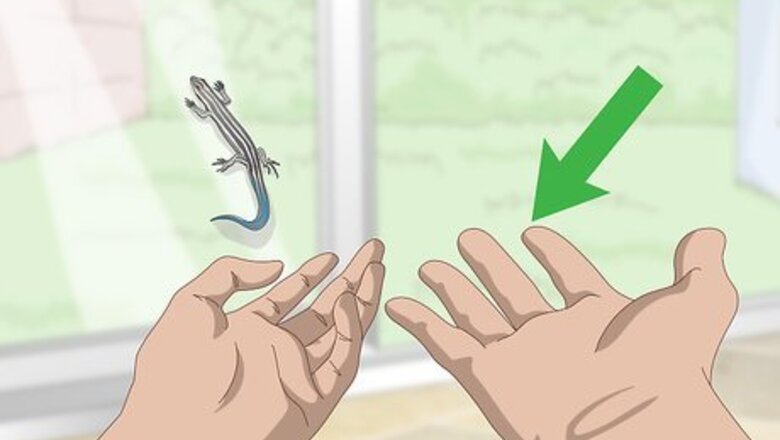
views
Using Your Hands
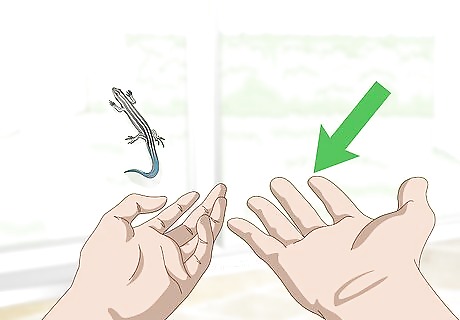
Use your hands if you need to catch the lizard immediately but don’t have a net or trap. Catching a blue tailed skink with your hands is very difficult, as skinks are quite fast and quickly shed their tails. If you have no other options or like a challenge, then you can try to catch one this way. If you have trouble luring the skink out of its hiding place, then it will be difficult to use your hands. Try using a trap instead.
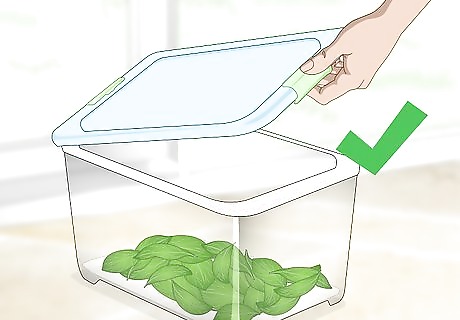
Prepare a temporary home to put the skink in after you catch it. Any unscented, sturdy container will be fine for a temporary home, but make sure the walls are at least 6 inches (15 cm) high. You can add local leaves and grasses, along with food and water, to make the skink more comfortable before you let it go. Blue-tailed skinks will eat spiders and other insects, but the easiest food to acquire are crickets. If you can, choose a container with a lid so the skink can’t run out before you release it. Poke holes into the side with a pair of scissors so it can breathe easily.
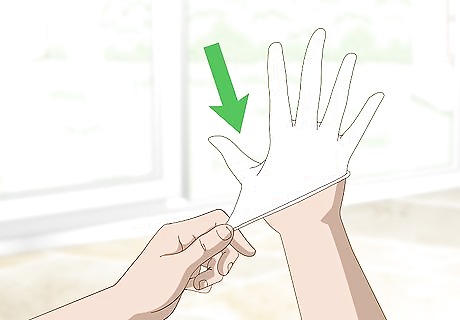
Put on gloves to avoid germs and protect yourself from bites. If you can, slide on thick work gloves before going to catch the skink with your hands. Lizards can carry infectious diseases, including salmonella and botulism. Although the risk of you getting a disease from brief contact with a skink is low, it’s best to play it safe by putting on gloves before you handle it. Skinks can also bite. Their bites aren’t poisonous or very painful, but it’s still best to protect your hands if you can.
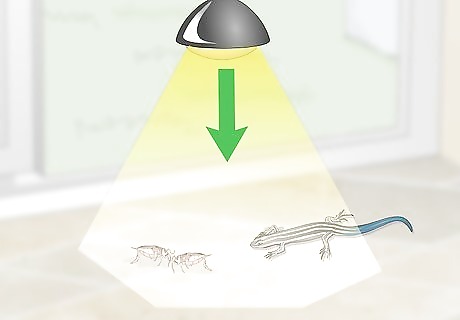
Lure the skink out of its hiding place with bait and light. Blue-tailed skinks, like most lizards, are attracted to light. Set up a light, such as a lamp or a flashlight, and some bait (either crickets or mealworms) near the area where you think the skink is located to help lure it out. If you use bait but don’t want to touch it or place it on your floor, put it in a small container, such as a small plastic bowl or lid. Remember that there’s still a chance the bait might jump or crawl out, so keep a close eye on it. Shine the light at the spot where you want the lizard to go.

Move slowly towards the skink. You do not want to scare it too early, so get yourself close to it slowly and without abrupt movements. You should come towards it from behind (or above, if possible) so that it is less likely to see you.

Grab the skink’s body quickly to catch it. Use your hand to quickly capture the lizard from above or behind. Make sure you try to catch it on its body, rather than its tail. Skinks can detach their tails when threatened and escape if you grab them there. Be careful not to squeeze too hard, or else you could injure the skink. Keep your fingers away from the skink’s mouth. Although skinks are not poisonous, it can still hurt when they bite!
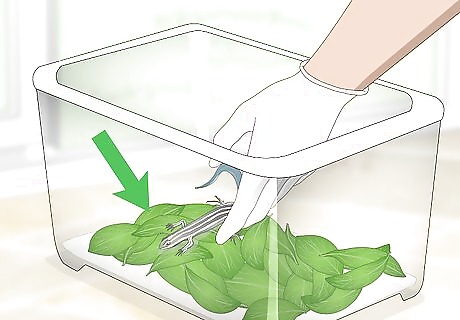
Place the skink in its temporary home, then release it. Carefully lower the skink into its temporary home. Place a lid or a piece of cardboard tightly over the opening so the skink can’t crawl out, then carry it outside. Release it on the ground in your yard or, if you want it further away, in a nearby park or wooded area. To avoid stressing or frightening the skink too much, try not to keep the skink in the temporary home for more than 12 hours or so.
Catching It with a Net
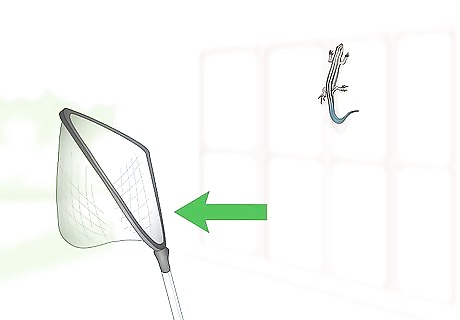
Use a net if you don’t want to use your hands and can’t use a trap. Using a net is a good option if you can’t catch the skink in a trap—if it’s outside or far from a wall, for example—but don’t want to use your hands. You’ll have more reach on the skink than you would with just your hands, and don’t have to worry about it shedding its tail. This method is best if you can clearly see the skink or easily lure it out. If it won’t emerge from its hiding place, try using a homemade trap instead.
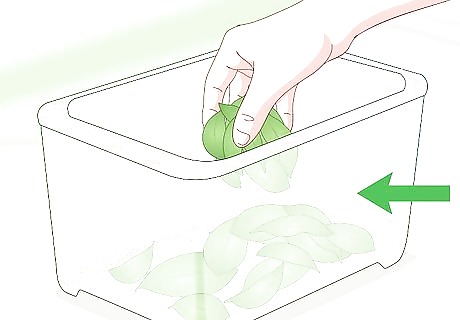
Prepare a temporary home to place the lizard in after you catch it. Clear out an unscented, sturdy container to store the lizard in until you release it. Make sure the walls are at least 6 inches (15 cm) high so the skink can’t crawl out easily. You can place local leaves and grasses inside, along with food and water, to make the lizard less stressed. If you want to add food, use crickets, spiders, or other insects. If you can, choose a container with a lid so the skink can’t run out before you release it. Poke holes into the side with a pair of scissors so it can breathe easily.
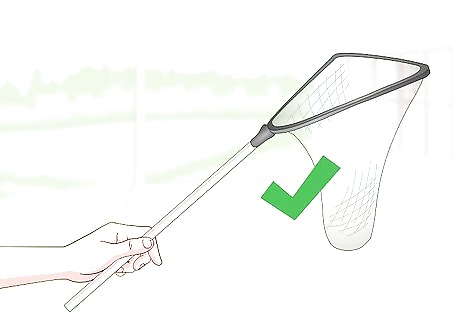
Grab a butterfly net with a long handle and wide net. If you’re catching the skink with a net, a butterfly net is the best choice. It has a wide net, which gives you a better chance of catching the skink, and a long handle to reach it from further away. You can use another kind of net as well, but make sure its holes are small enough that the skink won’t be able to slip through. Skinks are small enough to fit in the palm of your hand and are quite thin, so the holes should be as small as possible.
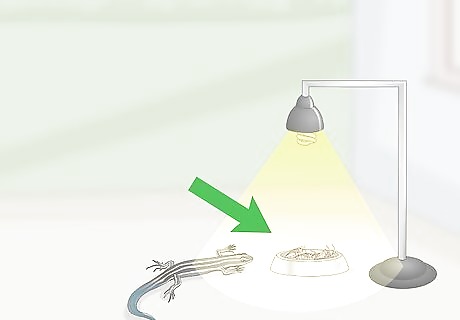
Lure the skink out with light and food. Like all lizards, skinks are attracted to light. Placing a lamp or a flashlight near its hiding spot might help to draw it out into the open so you can catch it. You can also try placing a small, shallow bowl of food nearby, such as crickets, spiders, or other insects. Remember that the bait might jump or crawl out of its container, so keep a close eye on it.
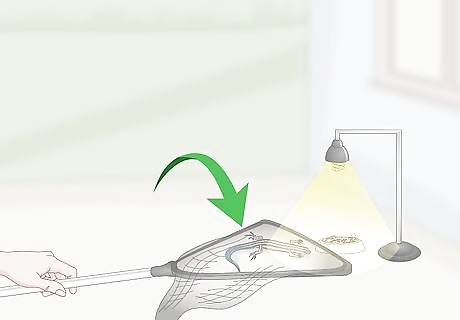
Trap the skink by closing the net around it from behind. When you get the skink into the open, approach it slowly from behind. Bring the net down quickly to trap it underneath, making sure not to hit the skink with the sides of the net.

Slide a piece of cardboard under the net and turn it over. Slowly move a piece of cardboard, or another kind of sturdy paper, under the net, lifting up the skink slightly as you do. Then, lift the net and cardboard and slowly turn the net over so that the skink falls to the bottom. Continue holding the cardboard over the top of the net so the skink can’t jump or crawl out.
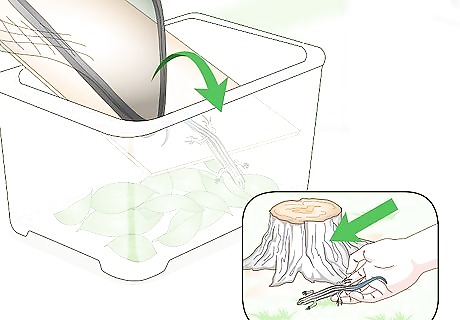
Slide the skink into its temporary home, then release it outside. Remove the cardboard and turn the net over to allow the skink to fall or crawl into its temporary home. Then, carry the container outside to an area away from your house and set it down on its side to allow the skink to crawl out. To avoid stressing or frightening the skink too much, try not to keep the skink in the temporary home for more than 12 hours or so.
Catching It with a Humane Trap
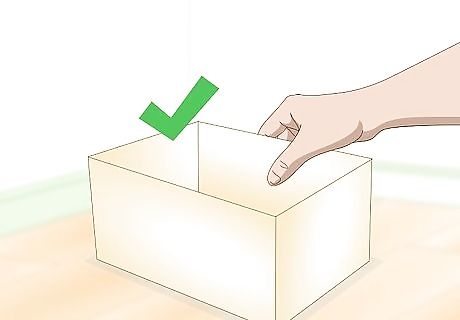
Use a simple cardboard box trap to catch and transport the lizard in one container. If you don’t want to catch the lizard by hand but don’t have a net around either, using a cardboard box can be a great solution. It’s humane and easy, and only requires you to set down a cardboard box and wait for the skink to crawl in, then release it outside. This works best if you already know where the skink is hiding, and especially if they’re indoors or in a small corner where you can box them in.

Herd the lizard towards a corner with a broom or stick. If the skink isn’t already in a corner or against a wall, herd it in towards one. You can simply walk towards the lizard, or use a stick or a broom to encourage it to move. Avoid touching the skink with the stick or broom, as that might injure it.
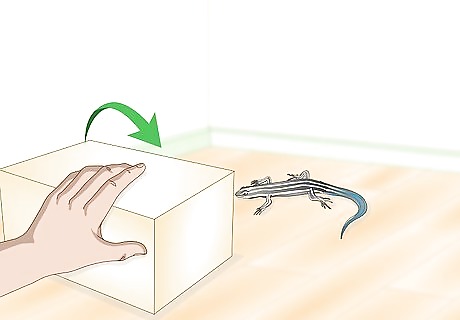
Place a cardboard box against the wall, facing the skink. Once you have the skink backed into a wall, set down your box so that the opening is facing the skink. If the skink is in a corner, place the box diagonally so it doesn’t have room to escape around the sides. If it’s not, try placing obstacles around the box, such as other boxes or high stacks of books or other objects, to block off its escape routes. You can make the box more attractive to the skink by placing some local grasses or leaves inside or even providing food like crickets, spiders, or other small insects. Use a shoebox or an old packaging box to catch the skink. Make sure it’s big enough that the skink can fit inside, but not so big or damaged that it’ll be able to crawl out through other openings. Avoid airtight boxes as well.
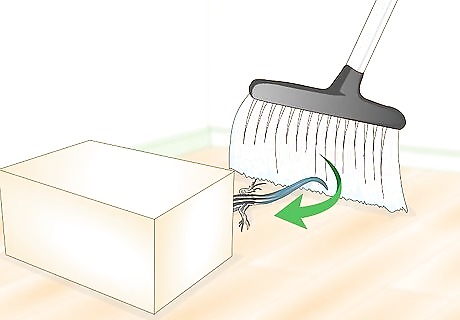
Herd the skink towards the box with a broom or stick. Try to nudge the skink towards the box with a broom or a stick, again without touching it. You can also simply leave the box and obstacles where they are and wait for the skink to crawl in by itself. Check back in a few minutes to see if the skink has gone inside; if it hasn’t, give it more time.
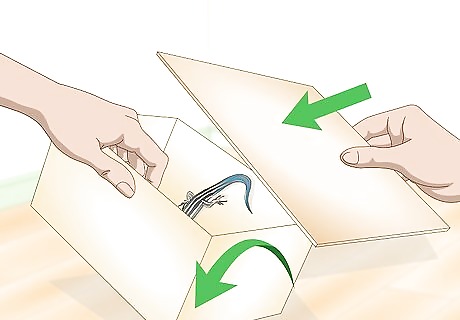
Tip the box upright and cover it with a piece of cardboard. Once the skink is in the box, quickly tilt it upright and cover it with another piece of cardboard or stiff paper. Keep the cardboard or paper in place as you lift the box to make sure the skink doesn’t get out.
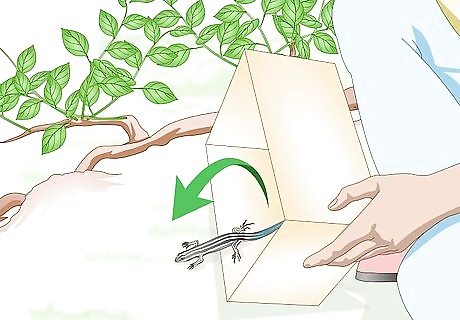
Take the box outside and release the skink. Let the skink go in your yard or if you don’t want it getting into your house or garden again, in a nearby park or forested area. Simply set the box on the ground again and slowly tilt it to its side. Remove the cardboard on top and allow the lizard to crawl out! To avoid stressing or frightening the skink too much, try not to keep the skink in the temporary home for more than 12 hours or so.

















Comments
0 comment